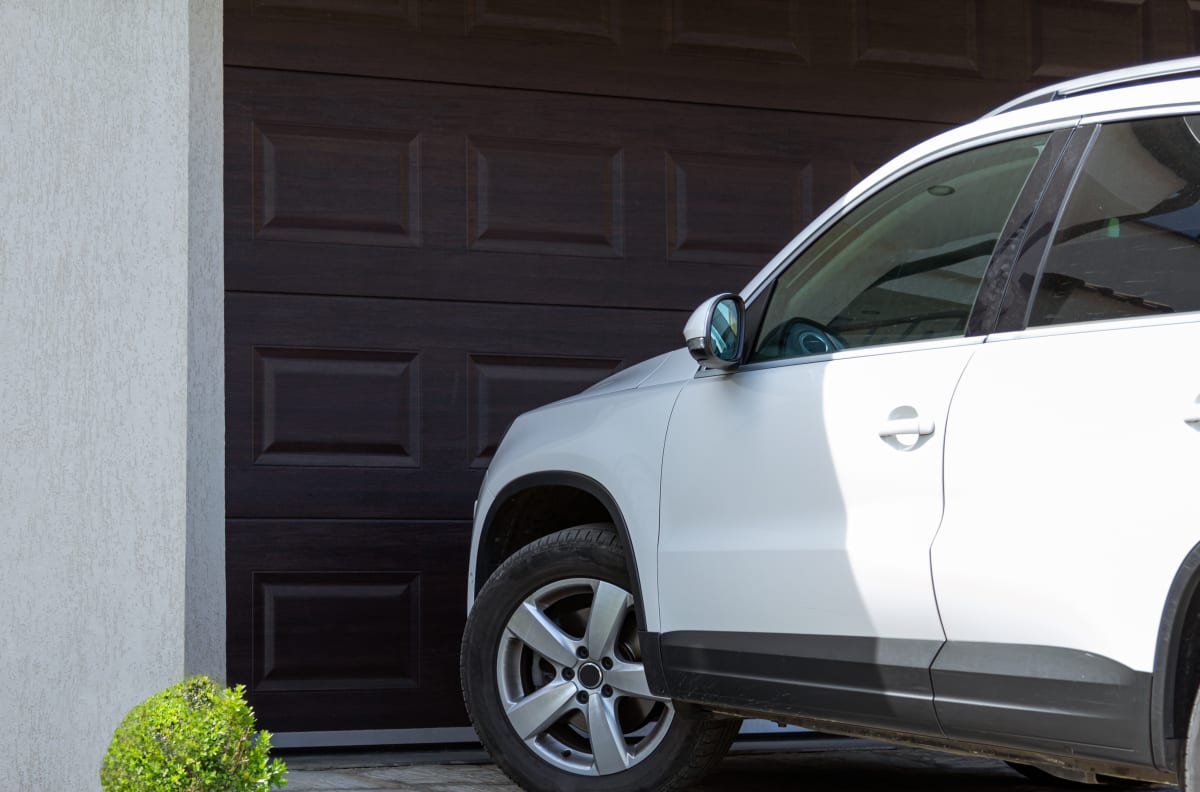The sun may be a welcome sight on a summer's day, but its rays can be less than kind to your car's paintwork. Prolonged exposure to ultraviolet (UV) light can cause the paint to fade, discolour, and in severe cases, even crack or peel. Such damage not only diminishes the aesthetic appeal of your vehicle but can also affect its resale value. Fortunately, there are practical steps you can take to shield your car's exterior from these damaging effects. In this guide, we will explore straightforward and effective methods to protect your car's paint from UV damage, ensuring it remains vibrant and in top condition for years to come.
Understanding UV Damage
What Causes UV Damage
UV damage occurs when ultraviolet rays from the sun penetrate the outer layers of your car's paint. Over time, exposure to these rays can break down the chemical bonds within the various paint molecules, leading to fading and discolouration. The process is exacerbated by heat, which can accelerate molecular breakdown. This is why cars left in direct sunlight often show signs of damage more quickly. Additionally, pollutants in the environment can interact with UV rays and further degrade the paint. Acid rain, bird droppings, and tree sap can all contribute to weakening the paint's protective layer, making it more vulnerable to UV light. To combat this, it's crucial to understand that constant exposure without protective measures is a recipe for deterioration. Taking steps to minimise UV exposure can significantly prolong the life of your car's paint.
Effects on Car Paint
The effects of UV damage on car paint are both visible and detrimental to the vehicle's overall condition. Initially, the paint may start to lose its gloss, appearing dull and lacklustre. As exposure continues, the paint can begin to fade, often unevenly, leading to a patchy appearance. This is particularly noticeable in darker colours, which absorb more heat and UV rays. Over time, the paint may discolour, shifting from its original hue to a lighter, less vibrant shade. If left unaddressed, extensive UV exposure can cause the paint to crack or peel, a condition known as 'crazing'. This not only affects the car's aesthetic appeal but also exposes the underlying metal to corrosion risks. Furthermore, damage to the paint can reduce the vehicle's resale value, as potential buyers are deterred by the cost and effort of repainting. Protecting your almost new car paint protection well from UV rays is essential to maintaining its visual and monetary worth.
Long-Term Consequences
The long-term consequences of UV damage extend beyond mere cosmetic issues, potentially impacting the structural integrity and value of your car. As the front paint job continues to degrade, the protective clear coat and underlying layers become compromised. This deterioration leaves the metal body vulnerable to rust and corrosion, particularly in areas where the paint has peeled or cracked. Such damage can lead to costly repairs and may reduce the lifespan of your vehicle. Moreover, a car with noticeable paint damage often suffers a significant depreciation in value. Prospective buyers are usually wary of vehicles showing signs of neglect, factoring in potential repair costs when considering an offer. In a competitive market, maintaining your car's paintwork can be a critical factor in securing a favourable resale price. Consequently, understanding and mitigating the long-term impacts of UV exposure is crucial for preserving both the function and value of your vehicle.

Proactive Protection Techniques
Regular Washing and Waxing
One of the simplest yet most effective ways to protect your car's paint from UV damage is through regular washing and waxing. Washing your car removes dirt, grime, and pollutants that can exacerbate UV degradation. It’s important to use a pH-balanced car shampoo to avoid stripping away essential oils from the paint. After washing, applying a good quality wax adds a protective layer that reflects UV rays and prevents them from penetrating the paintwork. Waxing not only enhances the car's shine but also acts as a barrier against environmental pollutants and moisture. Ideally, you should wax your car every three months, though this may vary based on local weather conditions and the car's exposure to elements. Regular maintenance can significantly prolong the life of your car's paint, keeping it vibrant and well-protected. This simple routine ensures that you how to protect your car's paint from uv damage your vehicle remains in top condition, maintaining both its appearance and value.
Applying Paint Sealants
Paint sealants are an excellent option for long-lasting protection against UV damage. These synthetic products create a robust shield over your car’s paint, offering an enhanced defence compared to traditional waxes. Made from polymers, paint sealants bond with the paint surface, forming a durable layer that can last several months, even up to a year with proper care. This protective layer not only reflects UV rays but also repels water, dirt, and other contaminants. Applying a paint sealant is straightforward: after thoroughly washing and drying your car, apply the sealant with a soft applicator pad, using circular motions for even coverage. Allow it to cure as per the product instructions before buffing off any excess with a microfibre cloth. For optimal results, it’s advisable to apply the sealant in a shaded area to prevent premature curing under direct sunlight. This proactive step can keep the paint fading your car looking pristine and protect its value over time.
Using Car Covers
Car covers are a practical and effective method for protecting your vehicle from UV damage, especially if you don't have access to covered parking. Designed to shield the car from the sun's harsh rays, a good quality cover can significantly reduce exposure to UV light. When choosing a car cover, opt for one that is UV-resistant and tailored to your vehicle's size for optimal fit and protection. Using a car cover also helps protect against other environmental factors like bird droppings, tree sap, and dust, all of which can contribute to paint degradation. When applying the cover, ensure the car is clean to prevent scratches from trapped dirt particles. It's a simple and efficient solution that requires minimal effort once the seat covers are in place. Regular use of a car cover, particularly during peak sunlight hours, can help maintain your car's paintwork and extend its lifespan, making it a valuable addition to your car care routine.
Choosing the Right Products
Selecting Quality Waxes
Selecting a quality wax is crucial for effective UV protection and maintaining your car's paint. Quality waxes provide a protective barrier that not only enhances the shine but also shields the paint from harmful ultraviolet rays. When choosing a wax, consider whether you prefer natural carnauba car waxes or synthetic options. Carnauba wax is known for its deep, glossy finish and is ideal for car enthusiasts who enjoy frequent waxing. Synthetic waxes, on the other hand, often offer longer-lasting protection and are easier to apply, making them suitable for those seeking low-maintenance options. Look for waxes that explicitly mention UV protection on their labels for added security against sun damage. Application is key, so follow the manufacturer's instructions carefully, ensuring a clean, dry surface before applying. Regular waxing, combined with a quality product, can help preserve your car's finish, keeping it vibrant and protected from the elements over time.
Benefits of Ceramic Coatings
Ceramic coatings offer superior protection for your car’s paint, making them an increasingly popular choice among car owners. These coatings consist of a liquid polymer that chemically bonds with the paint, creating a permanent or semi-permanent layer. One of the primary benefits is their exceptional durability, often lasting several years compared to traditional waxes. Ceramic coatings provide car paint protection a high level of resistance to UV rays, preventing oxidation and fading. Additionally, they form a hydrophobic surface, causing water to bead up and roll off easily, carrying away dirt and grime. This not only makes cleaning your car simpler but also reduces the risk of swirl marks and scratches during washing. The glossy finish offered by ceramic coatings enhances the car’s appearance, maintaining a showroom-like shine. While the initial cost may be higher, the long-term protection and reduced maintenance make ceramic coatings a worthwhile investment for preserving your vehicle’s paintwork.
Importance of UV-Resistant Films
UV-resistant films, also known as paint protection films (PPF), play a vital role in safeguarding your car's paint against ultraviolet damage. These films are transparent and provide a robust barrier to protect car paint against UV rays, preventing fading and discolouration. Unlike waxes or coatings, UV-resistant films are designed to absorb the sun’s rays, offering a high level of protection by blocking a significant percentage of harmful UV radiation. Besides UV protection, these films also shield the paint from physical damage such as scratches, stone chips, and minor abrasions. Applying a UV-resistant film can be particularly beneficial for areas of the car most exposed to sunlight, such as the bonnet, roof, and boot. Installation of these films should be handled by professionals to ensure a smooth, bubble-free application. While the upfront cost might be higher, the comprehensive protection and preservation of the car’s aesthetics and resale value make it a prudent choice for car owners committed to maintaining their vehicle's appearance.
Maintenance Tips for Longevity
Routine Maintenance Practices
Routine maintenance is key to preserving your car's paint and ensuring its longevity. Start by establishing a regular washing schedule, ideally every two weeks, to remove dirt and contaminants that can degrade the paint. Use a pH-balanced car shampoo and soft microfibre cloths to avoid scratches. In addition to washing your car frequently, inspect your car for any signs of damage or imperfections, such as chips or scratches, and address these promptly to prevent further deterioration. Regularly applying wax or sealant will reinforce the paint’s protective layer, helping to ward off UV damage. Consider parking your car in shaded areas whenever possible to reduce direct sun exposure. For added protection, invest in car covers or UV-resistant films, particularly if your vehicle is frequently exposed to harsh conditions. By adhering to these routine practices, you can maintain the integrity of your car's paint, ensuring it remains vibrant and resilient against environmental challenges.
Spotting Early Signs of Damage
Identifying early signs of UV damage can significantly reduce the cost and effort required for paint maintenance. One of the first indicators is a dull or faded appearance, where the paint loses its original lustre. Pay close attention to areas most exposed to sunlight, such as the roof, bonnet, and boot. Discolouration, where the paint appears bleached or washed out, is another sign that UV rays are taking their toll. In more advanced stages, you might notice fine cracks or peeling, often referred to as 'crazing'. Regularly inspect your vehicle under different lighting conditions to catch these issues early. Addressing minor damage promptly with touch-up paint, polishing, or applying a protective coating can prevent further deterioration. By being vigilant and proactive, you can maintain your car's finish, avoiding costly repairs and preserving its resale value. Early detection is key to ensuring your vehicle continues to look its best for years to come.
Professional Detailing Services
Investing in professional detailing services can be a wise decision for maintaining your car's paint and extending its lifespan. Professional detailers have access to high-grade products and equipment that can provide a level of care and protection difficult to achieve with DIY methods. Detailing services often include thorough cleaning, paint correction, and the application of protective coatings such as waxes or ceramic coatings. These treatments not only enhance the car's appearance but also offer significant UV protection. Detailers are skilled in identifying and addressing early signs of damage, ensuring that any issues are dealt with before they escalate. Regular professional detailing, perhaps once or twice a year, can keep your car's surface looking its best and protect against environmental damage. While there is an upfront cost, the long-term benefits of preserving your car’s paint and enhancing its resale value make it a worthwhile investment for conscientious car owners.
Additional Preventative Measures
Parking in Shaded Areas
Parking your car regularly in shaded areas is a simple yet effective strategy to protect it from UV damage. By minimising direct sun exposure, you can significantly reduce the risk of fading and discolouration caused by the sun's rays. Trees, buildings, and carports can all provide welcome relief from the sun, helping to maintain your vehicle's paintwork. However, it's important to be cautious when parking under trees, as falling debris or bird droppings can also harm the paint. In urban areas, multi-storey car parks often offer shaded options. If you frequently park in open areas, consider investing in a portable car shade or sunshade, which can be easily set up and taken down. Regularly parking in the shade not only preserves the exterior of your car but can also keep the interior cooler, reducing wear on the dashboard and upholstery. This simple habit can go a long way in maintaining your car's appearance and value.
Installing Window Tints
Installing window tints is an effective preventative measure to protect your car from UV damage. While primarily known for enhancing privacy and reducing glare, window tints also block a significant portion of harmful UV rays from entering through the glass. This not only helps in preserving the car's interior, preventing fading and cracking of the dashboard and upholstery, but also contributes to maintaining a cooler temperature inside the vehicle. Window tints come in various shades and levels of UV protection, so choosing a high-quality tint that offers maximum UV blocking is advisable. Professional installation ensures a smooth finish without bubbles or creases, which can compromise effectiveness. Besides UV protection, tints can also reduce the strain on your car's air conditioning system, potentially improving fuel efficiency. It's important to check local regulations regarding tint darkness to ensure compliance. Window tints are a practical addition to your car care routine, enhancing both comfort and sun protection too.
Utilising Garage Storage
Utilising garage storage is one of the most effective ways to protect your car from UV damage. By parking your car in a garage, you shield it from direct sunlight, thereby preventing the paint from fading and discolouring. Additionally, a garage offers protection to vehicle paint from other environmental factors such as rain, hail, and bird droppings, which can all contribute to paint degradation. Ensuring your garage is clean and clutter-free can prevent accidental scratches or damage from stored items. If a garage isn't available, consider renting a storage space or using a carport for added protection. Regularly using garage storage not only preserves the exterior of your vehicle but can also maintain the integrity of the interior, as UV rays can cause the dashboard and upholstery to crack and fade. By prioritising garage storage, you can significantly extend the life and appearance of your car, ultimately safeguarding your investment.









